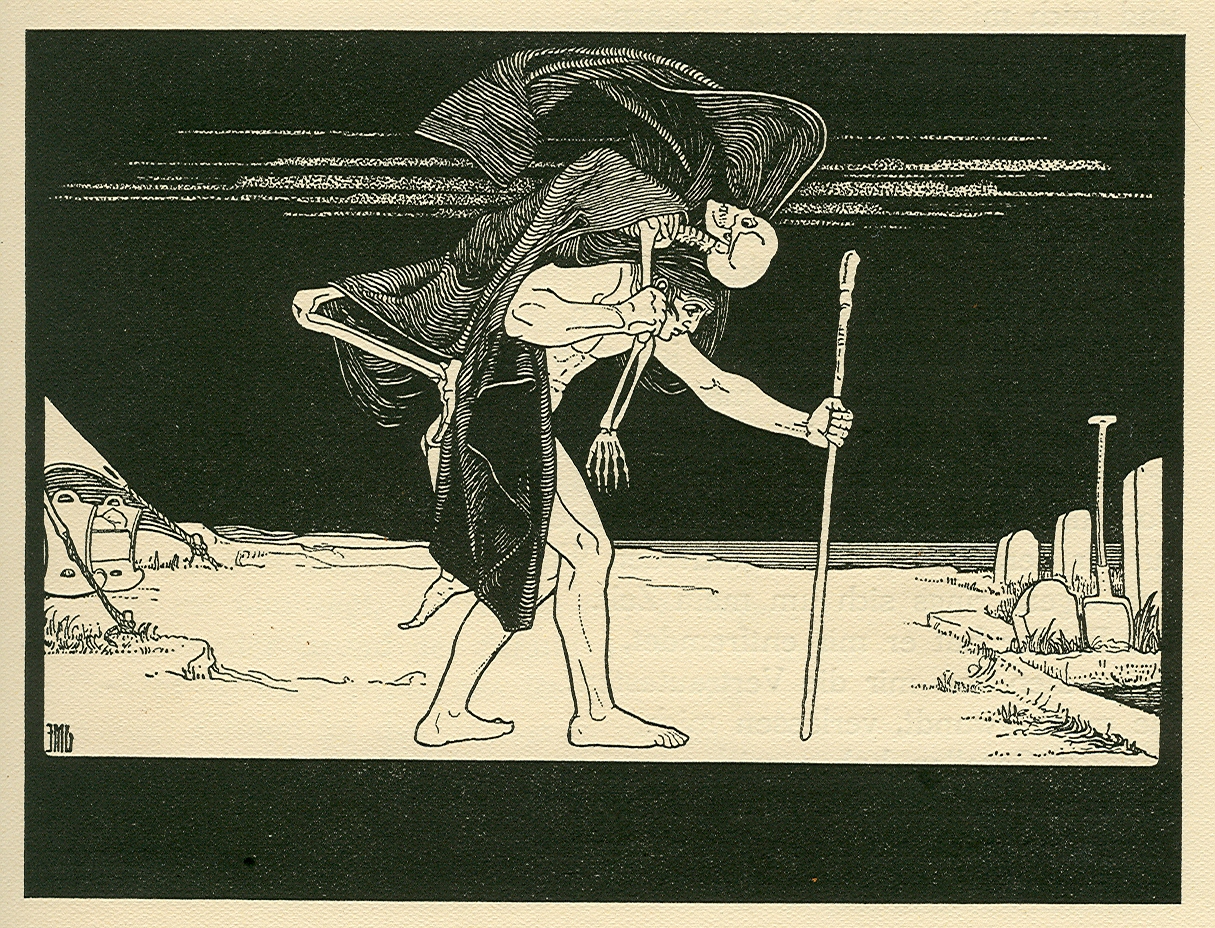 Submitted by Rabbi Les Leichman on
Submitted by Rabbi Les Leichman on

Dybbuk, by Ephraim Moshe Lilien (1874–1925).
By Ephraim Moses Lilien (1874–1925) - Book of Job, appearing in Die Bucher Der Bibel, Public Domain, https://commons.wikimedia.org/w/index.php?curid=19447366
Before the advent of modern medicine it was believed that certain mental illnesses were caused by demonic spirits taking control of the afflicted person’s body. In Jewish folklore these spirits were called dybbuks. They came from the domain of evil. The person could not be cured until they were exorcised, sent back to where they had come from.
The domain of evil is called in kabbalistic terminology the Sitra Ahra, the “Other Side”. An inversion of the divine world, it is the abode of dark forces. Angels oversee the world we live in, demons dwell on the Other Side. Satan doesn’t play a big part in kabbalistic mythology although he does appear occasionally, as himself, or in the guise of the bad angel Sama’el. It is not Satan who should worry us most. The things we should most fear are demons.
The greatest danger is when a demon clings to our soul. A clinging demon is called a dybbuk. The Hebrew verb from which the word dybbuk is derived is also used to describe the cleaving of a pious soul to God. The two states are mirror images of each other.
Kabbalistic folklore is full of stories about demonic beings. Demons themselves frequently took the shape of cats or black dogs. Sometimes they attached themselves to lost, dead souls who, for one reason or another, had not been able to transmigrate successfully. The demon would then guide the renegade soul into the body of a living person. This gave the soul a refuge, and the demon an opportunity to take control of the possessed person’s body.
Most frequently, the unfortunate person whom the dybbuk possessed was a woman. The image of a dybbuk , usually male, penetrating her body is both sexual and an illustration of the doctrine of opposites. Male and female, living and dead, pure and impure, all fused together in one human body. Exorcising a dybbuk, removing the destructive forces from a pure soul, is not just an imperative to save a person who has been possessed. It is a battle in a cosmic war.
Of course, today we talk about mental health, not possession by dybbuks. But in times gone by, possession by spirits was a common way of explaining behaviours that could not otherwise be understood. So common that even those who were not mentally ill but who simply deviated from social norms were frequently considered to be possessed.
Jewish women believed to be possessed by dybbuks would have fared no better in Christian society, where they would have been condemned as witches. It is no coincidence that between the 16th and 18th centuries, when fear of dybbuks was at its peak, the Church burned to death between 300,000 and one million men and women condemned for witchcraft. Superstition was most pervasive in those years between the Renaissance and the Enlightenment, the very years we call the beginning of modernity.
Exorcising a dybbuk involved removing it from the body in which it had taken up residence and returning it to the world of the dead. In this way a small piece of the cosmic order would be restored. The dybbuk, of course, did not want to go.
A dramatic, terrifying ritual was required to force the reluctant spirit out of the body in which it was squatting. The ceremony was conducted in the synagogue, in the presence of ten men who had purified themselves through fasting and ritual immersion. They would all dress in the white shrouds in which a corpse is buried, wreathed in prayer shawls, their heads and arms bound with the sacred parchments worn in daily prayer.
The exorcist would address the dybbuk directly. Listing the offences that the soul had committed during its human life, which might include apostasy, talebearing, suicide, murder or ritually deviant conduct, the exorcist would both cajole and threaten the dybbuk.
With the dybbuk fully cognisant of the trouble it was in, and the appeal to its better nature concluded, the ark in the synagogue containing the scrolls of the Torah was opened. Seven scrolls were removed, seven blasts were blown on seven rams’ horns and seven black candles lit. Curses were proclaimed, incantations recited, and seven different combinations of the 42-letter name of God pronounced.
The Safed kabbalist Hayyim Vital recorded instructions received from his teacher Isaac Luria for expelling a dybbuk. It was imperative that the exorcist remained strong-hearted, displaying no fear. The spirit was to leave the body only between the big toe and its nail; any other exit route might cause permanent damage to the possessed person. Crucially the spirit was to be warned, with threats and imprecations, against entering anybody else. There is no place for the world of the dead in the abode of the living.
Extracted from Harry Freedman’s book, Kabbalah: Secrecy, Scandal and the Soul, published by Bloomsbury,
https://www.thejc.com/judaism/features/how-to-deal-with-a-dybbuk-1.479193
- 590 reads